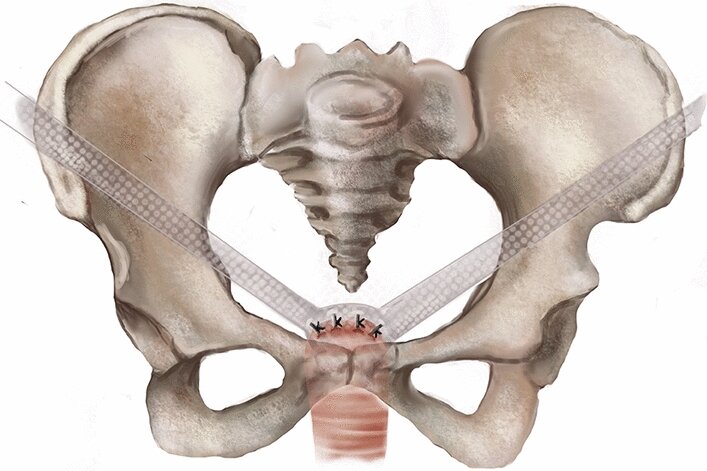Uterine prolapse is corrected by artificially creating adhesions and using the uterus, a tough natural tissue, as a pelvic floor puller and suspending it to the anterior abdominal wall. Laparoscopic suspension and fixation of prolapsed uterus on the anterior abdominal wall is simple and less invasive, with an average bleeding volume of less than 10 ml and an average operating time of 20 min. The entire surgical route does not involve large blood vessels or important organs, and the tissues themselves are used as pulling supports, with no foreign bodies other than sutures. Patients can get out of bed on the same day after surgery, and some patients may experience postoperative abdominal wall pulling discomfort, which usually relieves naturally in 3 to 5 days. Long-term follow-up has shown that in addition to correcting the prolapsed uterus, the patient's bowel movements, urinary frequency and quality of sexual life improve significantly, but the procedure does not improve urinary incontinence.
Laparoscopic suspension and fixation of the anterior abdominal wall of the prolapsed uterus is a reliable option with definite efficacy, safety, minimal complications, and handy operation.
Indications
Prolapsed pelvic organs (manifesting as uterine prolapse) with a predominantly pelvic defect in POP-Q≥II, which may be combined with mild to moderate bulging of the anterior and posterior vaginal walls, especially for patients with the desire to preserve uterine.
Contraindications
1, pregnancy; 2, irregular uterine bleeding; 3, abnormal cervical cytology; 4, obesity (BMI > 35); 5, with other diseases that cannot tolerate anesthesia or bowel preparation.


